We were a group of four people on a trekking expedition to Roopkund Lake. Prior to this trek, we never travelled together, and expect my one colleague, I didn’t know the other team-mates. We met online for this trek and then became a very good team to complete this trek independently without any tour operator in a very economical budget.
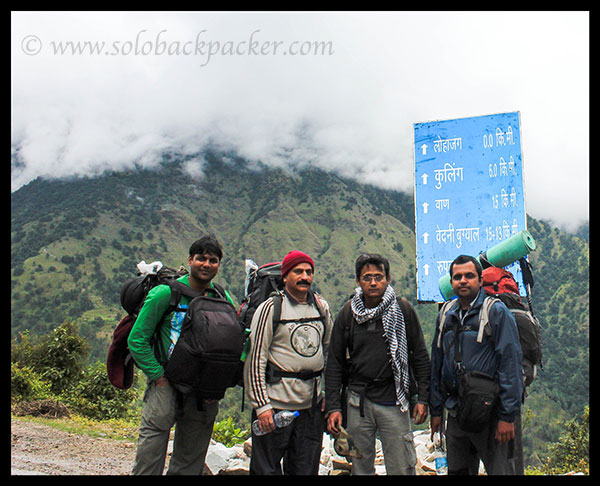
We reached Lohajung, a small village in Uttarakhand, India at 1300 Hrs in the afternoon. Lohajung is considered as a base station for this trek. It took us a combination of different transports, first a 7-hours train journey from Delhi to Haldwani, then 10-hours shared jeep journey to Gwaldam, a night halt at Gwaldam and then again four different jeep journeys, to reach Lohajung on the third day. It is a small village situated on the edge of a hill with a beautiful valley of Nilganga on the other side. Many people starts their trek from here only. Some also travel by a jeep to Wan village, 15 kms away from Lohajung and the last motorable village in this part of the Himalayas. Wan Village is also a base location for this trek.
After reaching Lohajung, we straight went for the lunch at a restaurant, just adjacent to the jeep stand. It is the only decent restaurant available at Lohajung Village. This is not a small village by hilly area standars, but at 1300 hrs of the day, there were very people on the road. It is very quiet, more than I expected. But the surroundings are very beautiful, again more than I expected :-).
There are some shops for daily household items near the jeep stand. For major shoppings, people generally go to Dewal Market. If you want to proceed via Didna Village on your trek, then better to buy or hire all the things at Lohajung itself, as there is no chance to get those things after Lohajung. But if you goes via Wan village, then you have a chance to get those things at Wan Village.
The restaurant near the jeep stand is also having the lodging facility. It is a nice option to take a night rest before starting the trek. Just adjacent to this restaurant, there is another guest house, that looks very decent from the outside. This guest house basically serve the bulk customers of a particular trekking operator, but if you reach on the day other than the tour operator’s schedule, you can also get an accommodation there.
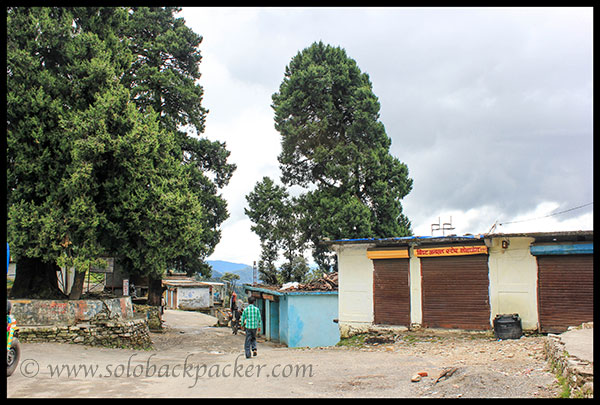
There are two routes originating from Lohajung village for the trek. First route passes via Wan village and second one via Didna village. If you go via Wan village, you can return back via Didna village and vice-versa. we decided to start our trek from Lohajung via Wan village, so that we could return via Didna village. Two major tour operator in this region do this in reverse direction. They basically move forward via Didna village and return via Wan Village. Please read the first post (Roopkund Trek 1: General Information) on Rookpkund Trek series for the pros and cons of these routes.
Facilities Available at Lohajung Village: 2-3 Guest Houses and 2 small Restaurants, Small Market, No ATM, All Mobile Networks (Major Operators Airtel, Vodafone, Idea)
We had an option of boarding a jeep from Lohajung to Wan Village. But, we wanted to test our stamina with our backpacks, so that we could make necessary arrangements at Wan Village, if required. After Wan Village, there is no help on the way till Roopkund Lake and back. So, we decided to trek on this route also.
The weather was nice with few clouds in the sky, but there was no chance of rain. So, we took our backpack and trekked towards Wan Village. We all were cheerful and excited by the scenic beauty. It was only the beginning for this 6-days trek, so we were full of energy and motivation.
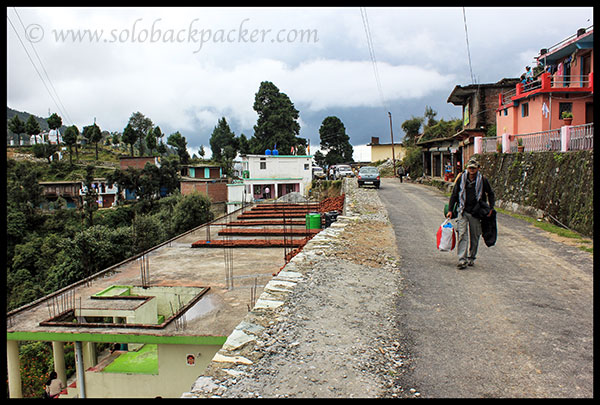
This road is in good condition from Lohajung to Wan village and moves along the edge of the hill. It allows us a nice and clear views of surrounding hills, valleys and villages. From Lohajung upto some distance this road is paved with tar, but the major portion of this road is full of small stones, but they don’t create any problem in walking. The road is almost parallel upto Wan Village and expect a bad patch of 100 meters (full of mud), it is really a nice path to walk.
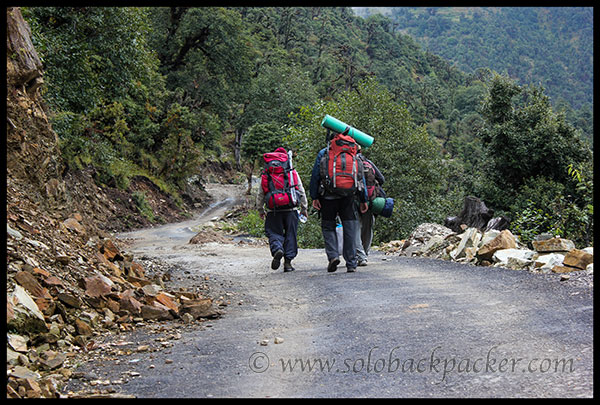
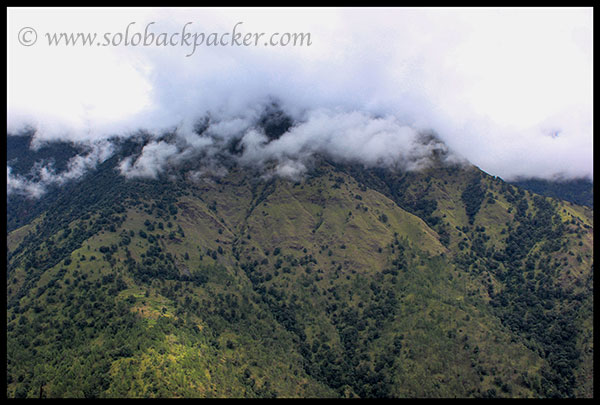
There are at least 3-4 waterfalls/water streams along the road till Wan village. There is no need to carry extra water bottle with you from Lohajung. I don’t claim anything about the purity of the water, but water was very sweet in the taste, wherever we drank during whole trek. We had chlorine tablets and water filter with us, but never used that.
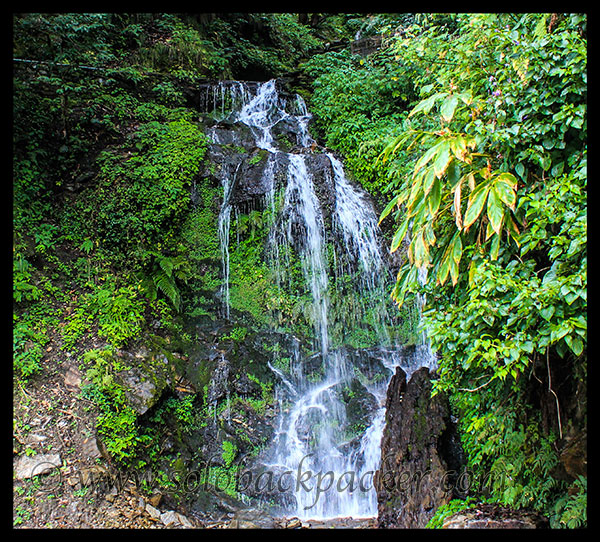
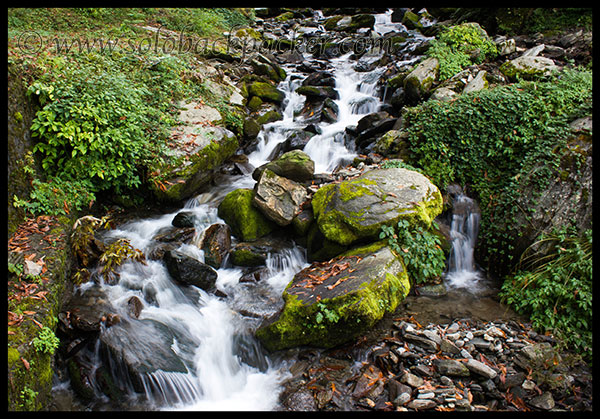
My idea was to walk for 3 kilometers in an hour, so that we could reach Wan Village by 1800 Hrs in the evening. But, with our backpacks and so many photo-clicks, we managed to cover almost 2 kms in an hour.
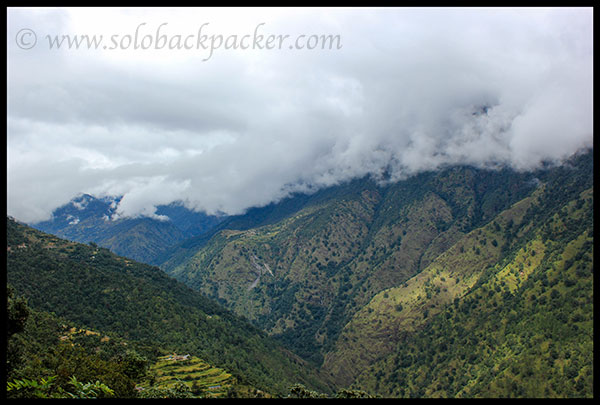
Didna village is also visible continuously on the opposite hill across the valley. We stopped many times to click the pictures of the valley from different points. After walking for 5 kms, we had the first view of Kulling Village on a turn. Kulling village is a small village with the white-washed houses on the slope of a hill. The people in this village are mainly depend on the agriculture for their daily needs and livelihood. Some of them also served as porters/guides for Roopkund Trek.
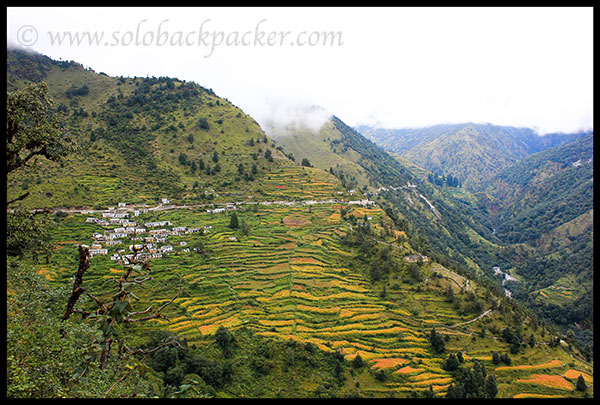
There are many fields of Chaulai (a crop mainly used to make chapatis) around Kulling village. They have grown in different colors Pink, Red, Yellow and then there is lot of greenery around the village. So, entire area looks very colourful.
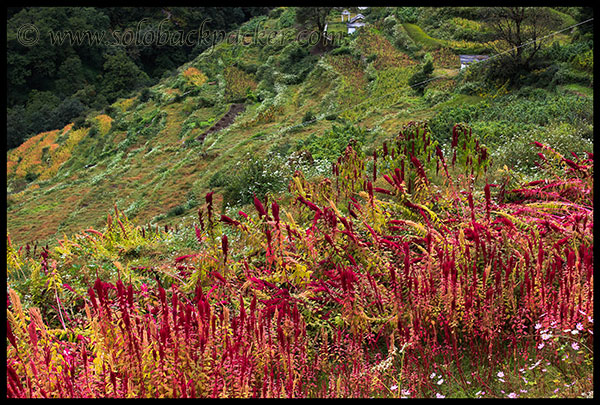
There is another trail going from Kulling to Didna Village, so if you still hesitate to continue on this route via Wan Village, you can follow that trail to Didna village for the second route.
At Kulling, we were approached by a man, who wished to join us as a porter-cum-guide. But, we were still in no mood to hire any porter, so we refused his services and moved further. After walking for few kilometers, we came across a hill that looks completely different from the other hills in this area. While other hills were full of trees and covered by dense forests, this particular hill is only covered by small green grass and very few trees.
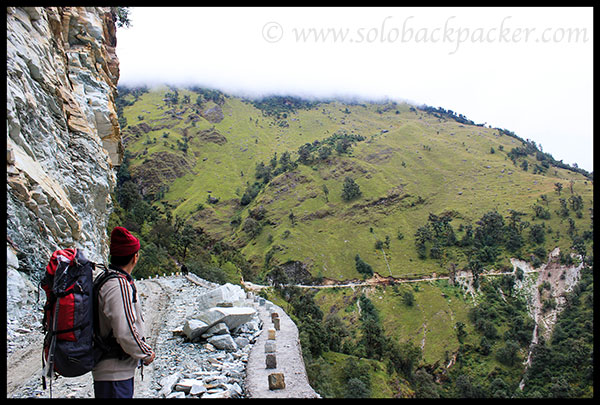
On the edge of the hill, the road is full of mud, so we walked ahead carefully to keep our shoes safe from the heavy mud.

We finally reached Wan village at 1900 Hrs. It took us 6 hours to cover that distance of 15 kms from Lohajung to Wan Village. Everybody went crazy after seeing a sign-board showing the distance of Wan Village as zero kilometer. It was an easy trail on the first day, but with heavy backpack, we found it very difficult. We went to click some pictures with that sign-board.
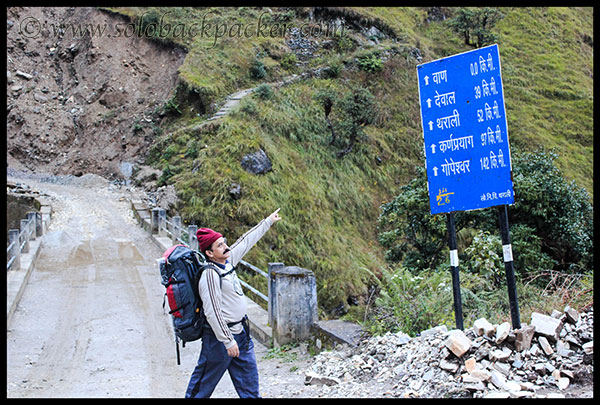
While we were busy in clicking pictures, some people gathered nearby. All were interested to became our porters, mule-owner or guides. But we wanted to take some rest before hiring anybody. We asked them for GMVN guest-house. To our surprise, and our misery, it was still 1 hour away from that point. We were in no mood to climb again on a hill. We decided to stay at another guest house near the Wan jeep stand, but that was also about 40 minutes away from that point.
We started walking further in the Wan village. In next 30 minutes, it became completely dark and we were still unable to find a place for night halt. Then, we met some local girls, who were returning home after collecting green-fodder for cattle. They guided us till the jeep stand.
There is a small guest house near the stand, but it is not in very good condition. Nobody was willing to move further, but there was no alternative. Then a boy appeared from somewhere and informed us that somebody already informed the caretaker of GMVN guest-house about our arrival and he was waiting for us. We made our mind to move further in complete darkness, and found a local person to guide us through the forest.
When we reached at the GMVN guest house, it was 2030 Hrs. We thanked the local guy who helped us. If he was not there with us, it could have been very difficult for us to reach there.
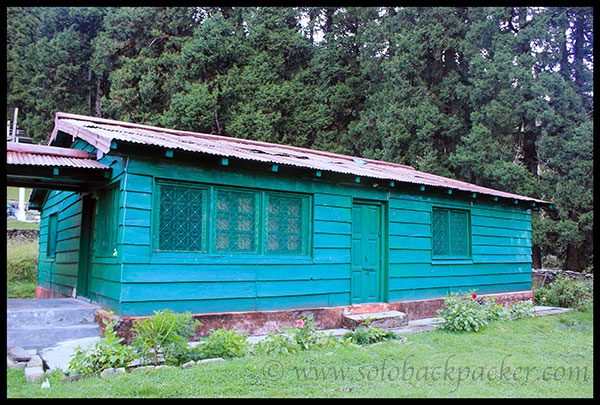
GMVN guest house is decent property in the middle of the forest above the Wan village. It has two large rooms with 4-5 beds in each room and attached bathroom. The caretaker Mr. Bishth was very kind to cooked a decent meal for us. It is also the last point to get the electricity, so we charged our camera and mobile batteries to use them for next few days. Next morning, We also got hot water to bath at the guest house.
Facilities Available at Wan Village: 2 Guest Houses and 2 small Restaurants, Small Market, No ATM, All Mobile Networks (Major Operators Airtel, Vodafone, Idea)
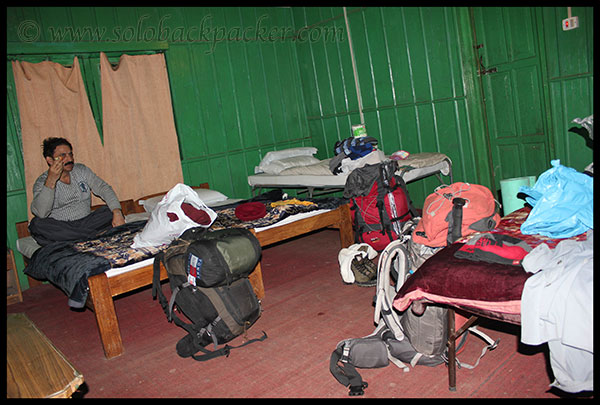
From the first day trek, we learned that without a mule it would be very difficult for us to climb on the hills. So, we requested Mr. Bisht to arrange a mule. On a short notice, it was very difficult to get a mule, as that was the peak crop season in the village, and everybody was busy in their fields. But, next morning, after so many phone calls, he arranged a mule and we moved further to Bedini Bugyal.


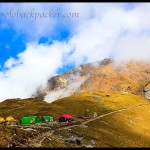
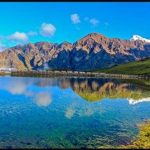
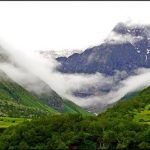
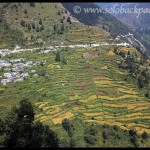
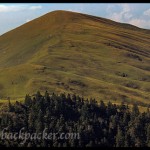
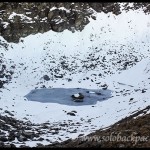
Enjoyed reading your trek to Roop kund..I have got a friend who hails from Loha ganj village..Looking forward to a trip early next year..Thank you..Very informative.
Hope you will have a great trip 🙂
Your description is vivid and detailed. I liked it. I went to Roopkund, Homkund, Ronti Saddle in 1990. I enjoyed your writing and got a picture of present perspective. I am aged enough (65) and my wife (trekking since 1987) is 58 is willing to go there in 2019 oct. May pray for help.
Sure Sir. Best wishes for a beautiful trip. 🙂
Hi, Can one complete this whole trek starting from Lohajung to Lohajung in 3 days?
Hmmmm, should I say that it is possible? You can do Lohajung-Bedini , Bedini-Roopkund-Bedini and then Bedini-Lohajung in 3 days. So, yes, it’s possible. But not recommended. Better to stretch it for one more day, ideally 2-3 more days. Hope there is no hurry. Have a nice trip. 🙂
Very informative and useful travelogue
Very nice description !!!
can we go till wan village on a royal enfield bullet?
Yes. You can go there. A good motorable road leads upto Wan Village.
hello sir i want to plan to go roopkund in mid feb . is it possible ?
Planning to cover the distance upto wan village with our car and will park our car there and start our trek….. is it feasible to do so ?…..
Hi, you can park your vehicle at Wan village and go for the trek. But in Feb, you may only trek upto Bedini Bugyal only. Beyond Bedini, there will be a lot of snow, and you have to use technical gears to deal with that.
sir we r also planning a trip to roopkund on this very month… most probably after 24th….
can we make our trek from bedni to roopkund ? i mean does the weather conditions should permits us to move ahead from bedni to roopkund…?
And 1 more ques…. we are from srinagar itself and planning to cover the distance upto wan village with our bikes and will park our bikes there and start our trek….. is it feasible to do so ?…..
Hi, You can park your bike at Wan and move ahead on the trek. Somebody will definitely help you in the village. Wan to Bedini Trek is not a problem, but there should be snow beyond Pathar Nachauni. You have to negotiate on a snow travel. 24th is too early for the trek beyond that and you may required some trekking gears to deal with the snow and a guide also. Hope you will have a great trip.
Thanxxx….. This information is so relevant for our trip….
I did this in the year 1990, it was totally different. We started from bagrigar which was last motorable place. Wan is the best place. We stayed in a village house. Baidini was amazing with only couple of shepherd houses.
Nice to read this ..
Roopkund is always a special trek in my life..interestingly the first one
Roopkund is really beautiful..A very special to me also. 🙂
Very well structured travelogue. I’m planning to hit Roopkund soon and the facilities at those villages were exactly what i was looking for.
Can you also tell me which month you made this trip?
Hi Ananth, We made this trip in the first and second week of October. This is considered as the best time for this trek.
Inspiring stuff… We planned it twice and couldn’t go because of different reason… It’s third time to plan and go this time for sure 🙂
Yes, that is really a worth trek for one week.. hope you will go this time. 🙂
Amazing pictures! Would love to visit it someday.